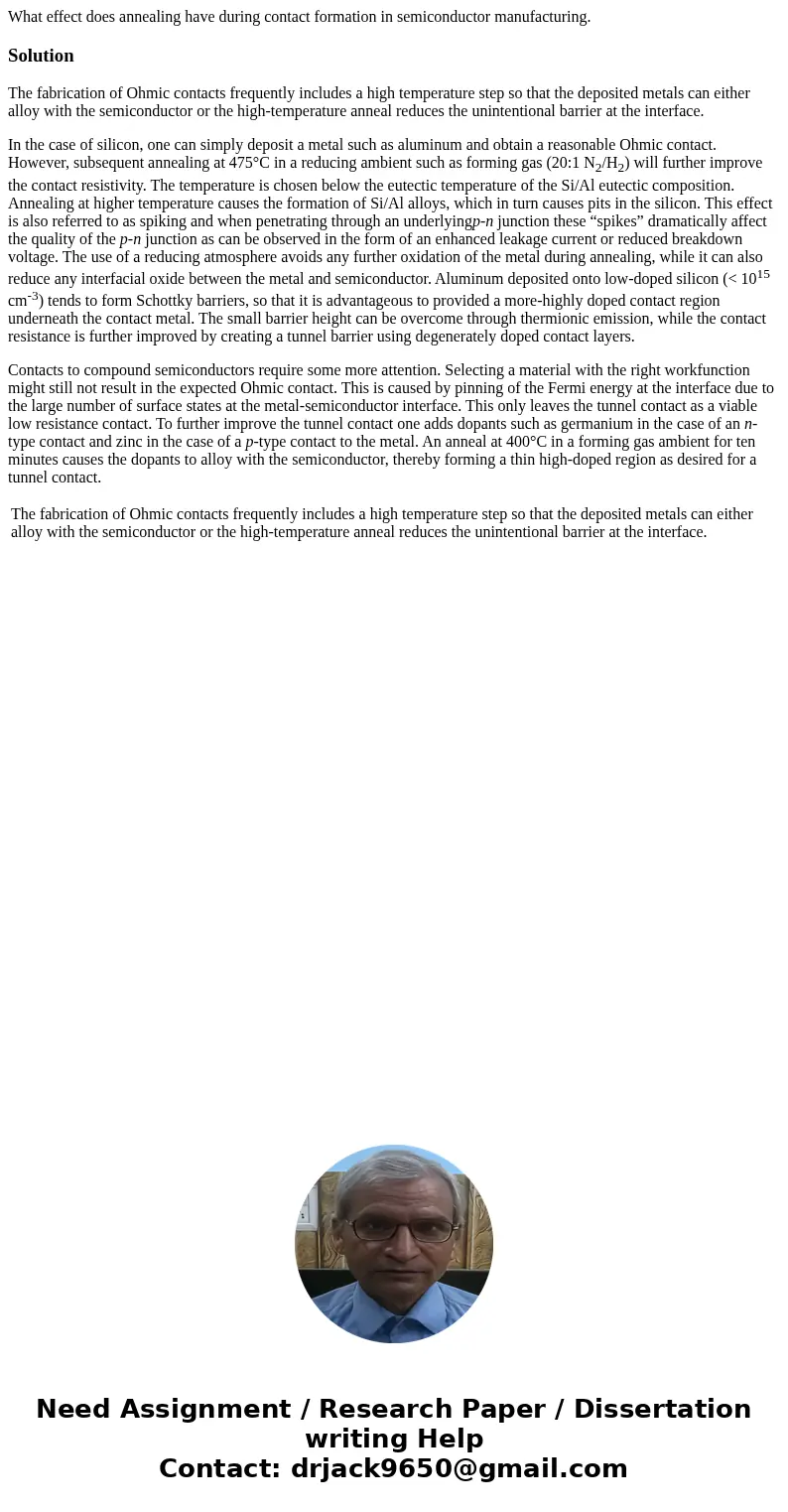What effect does annealing have during contact formation in
What effect does annealing have during contact formation in semiconductor manufacturing.
Solution
The fabrication of Ohmic contacts frequently includes a high temperature step so that the deposited metals can either alloy with the semiconductor or the high-temperature anneal reduces the unintentional barrier at the interface.
In the case of silicon, one can simply deposit a metal such as aluminum and obtain a reasonable Ohmic contact. However, subsequent annealing at 475°C in a reducing ambient such as forming gas (20:1 N2/H2) will further improve the contact resistivity. The temperature is chosen below the eutectic temperature of the Si/Al eutectic composition. Annealing at higher temperature causes the formation of Si/Al alloys, which in turn causes pits in the silicon. This effect is also referred to as spiking and when penetrating through an underlyingp-n junction these “spikes” dramatically affect the quality of the p-n junction as can be observed in the form of an enhanced leakage current or reduced breakdown voltage. The use of a reducing atmosphere avoids any further oxidation of the metal during annealing, while it can also reduce any interfacial oxide between the metal and semiconductor. Aluminum deposited onto low-doped silicon (< 1015 cm-3) tends to form Schottky barriers, so that it is advantageous to provided a more-highly doped contact region underneath the contact metal. The small barrier height can be overcome through thermionic emission, while the contact resistance is further improved by creating a tunnel barrier using degenerately doped contact layers.
Contacts to compound semiconductors require some more attention. Selecting a material with the right workfunction might still not result in the expected Ohmic contact. This is caused by pinning of the Fermi energy at the interface due to the large number of surface states at the metal-semiconductor interface. This only leaves the tunnel contact as a viable low resistance contact. To further improve the tunnel contact one adds dopants such as germanium in the case of an n-type contact and zinc in the case of a p-type contact to the metal. An anneal at 400°C in a forming gas ambient for ten minutes causes the dopants to alloy with the semiconductor, thereby forming a thin high-doped region as desired for a tunnel contact.
| The fabrication of Ohmic contacts frequently includes a high temperature step so that the deposited metals can either alloy with the semiconductor or the high-temperature anneal reduces the unintentional barrier at the interface. |

 Homework Sourse
Homework Sourse